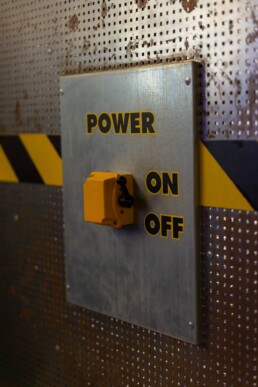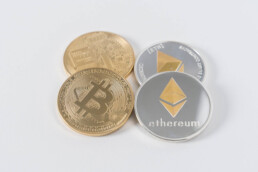Bitcoin halving in May 2020
The bitcoin halving is an event that occurs every about 4 years and halves the remuneration of closing a block of the Bitcoin blockchain. It is one of the main features of bitcoin monetary management.
In order to better understand what we are talking about, however, we must review 3 fundamental points which are:
Bitcoin blockchain
Mining
And the total supply of money
Talking about the BlockChain, it is a live record of all bitcoin transactions. The blocks are made up of the transactions within them, and the blocks are linked together in an indissoluble way.
The block is created when a defined number of transactions are made and the block can contain a maximum number of that transactions. Reaching this number, the block is closed and added to the block previously mined and linked to it.
When a Bitcoin transaction occurs, the data is communicated to the network of computers that validate the transaction, add the transaction to the bitcoin ledger and transfer the ledger change to all computers on the network. Since there is a maximum of data that can be saved in a block, a block is closed approximately every 10 minutes
Mining is how transactions are verified within the coin network. The verification and creation of the blocks is created by the miners. Each group of transactions has a cryptographic hash of the previously published block and this connects all to the previously created blocks creating the blockchain. To accept a new block on the network, miners are required to follow a proof of work system that involves the creation of a new cryptographic hash to add to the new block. To be added to the register requires the creation of a new single hash which will go through a validation process and then will be passed to the next block and so on. To create a new hash, miners compete with each other using the computing power of their computers to be the first to have the 64 digit hexadecimal number or hash that is at the same target difficulty level as the network.
The thing to understand is that the miners are remunerated at the closing of each new block with new bitcoins created by the system and by the transaction fees, which are already circulating btc. The rewards are created to incentivize miners to participate in the bitcoin blockchain.
Learn more about Mining here..
The amount of money.
Bitcoin was created as digital gold. Satoshi deliberately created bitcoin with characteristics similar to the physical gold. The principle of mining bitcoin is similar to gold mining, which is long and difficult. Another feature is the maximum amount of bitcoins that can be created which has been programmed to be 21 million. This number was created to copy the inflationary stability of gold. In this case, the term inflation is used for the growth of the amount of money that is not covered by gold in a gold standard.
In the modern way of understanding the term inflation, bitcoin is deflationary because his purchasing power grows over time. Compare it to the gold extraction profile where in the future the cost of extraction will be increasingly higher and more difficult and therefore the previous quantity of gold extracted will increase in value because no more can be produced at low prices.
In the old concept of inflation, bitcoin is inflationary because, not being covered by gold, the quantity of bitcoin grows as the creation of blocks by miners increases. There are now 18 million in circulation. At the current rate, the last bitcoin will be created in 2140
Let's go into the halving detail
The halving referred to the bitcoin blockchain is the reduction of the closing reward of a block for miners to half the previous number. The current reward is 6.25 bitcoins per block.
The halving takes place every 210,000 closed blocks and therefore more or less every 4 years since a block is closed every 10 minutes. Initially, the block reward was 50 bitcoins, which dropped to 25 in 2012 and then 12.5 in 2016
But why does halving happen? Satoshi planned halving to lower bitcoin monetary inflation. In addition, the technological advancement factor of mining machines is also considered and for this there is an increase in the difficulty of creating new blocks to lower the validation speed.
With 12.5 bitcoins per block and 10 minutes of build per block, around 1,800 bitcoins are created daily. After May 2020 these dropped to 900 bitcoins per day.
Now returning to the previous parallel with gold.
It is considered one of the best stores of value due to the fixed presence and its scarcity which is imposed by nature.
The bitcoin algorithm is created to make it scarce. So as the demand for bitcoin grows, the value will grow. There have been major rises in btc prices months after each halving, but this is a trading strategy that you may or may not consider.
Bitcoin as it is created in its algorithm, is made to be scarce and therefore grow in value as long as people like you and me believe in its intrinsic philosophy.
Mining, staking and forging for noobs
We often talk about mining, mining farms and energy consumption of cryptocurrencies. But what is mining in 4 simple words?
As we have already read, the blockchain is made up of concatenated blocks, inside which data or financial transactions and payments are written.
In order to avoid scams, counterfeits or even tecnical errors in payments, the data contained in the blockchain must be verified and this is exactly what mining is about.
Mining represents the verification procedure that is carried out by exploiting the computing power of the computers owned by the individual miner or by the mining farm. A mining farm is nothing more than a place, often a warehouse, with a very large number of computers that work and produce blocks.
Once a block verification process is complete, the miner who created the new block will be paid for his verification work. Mining keeps the blockchain alive.
To validate transactions within a blockchain network There are several systems implemented to achieve consensus
A "blockchain protocol" is a common term for consensus methods.
Some of these require investors to purchase physical mining equipment, while others require no physical hardware and only possession of coins.
Let's see the details aboud different consensus methods:
- PoW: Proof of work - This type of consensus is generically called mining and consists in the creation of computational power thanks to mining rigs formed by serialized graphics cards. This computational ability solves the coin algorithm and creates the blocks. Bitcoin is based on this system, which is not particularly eco-sustainable.
- PoS: Proof of Stake - the type of consensus to create blocks is defined staking and is based on the possession of a large number of coins that, when placed in staking in one's wallet and therefore not available on the market, allow the owner to mine the blocks of this blockchain. Ethereum is based on this method, which is greener than proof of work
- DPoS: Delegate proof of stake this type of consensus for the creation of blocks is defined forging and is based on delegates voted by the community of coin owners. Lisk and rise work with this system, which is as eco-sustainable as proof of stake.
In DPOS systems, forging is another way to mine coins in order to validate their transactions and put new money into circulation. This system consists of 101 delegates located around the world who keep a node (server) online where the coin client runs.
This software allows you to maintain the decentralized network, validate transactions, issue new money into circulation and reward delegates for their service. Delegates don't have to be 101 but can be 51, 201, 301, 501, etc. according to the needs of the network. To become delegates there is a voting system based on the amount of money owned (stake).
If you want to become a delegate you need to reach a sufficient number of votes to be able to enter the top 101 (approval).
The DPoS (Delegated Proof of Stake) system is a method aimed at ensuring a network of digital tokens that takes place by processing transactions and achieving distributed validation inherent in the ownership of money without the need for a central authority.
This system represents an evolution that started from PoS (Proof of Stake), also developed in order to reduce costs and the inefficiency associated with the consumption of electricity typical of PoW (Proof of Work) systems, used for example by Bitcoin.
Mining how to do
This block creation can become a profitable business if done with the proper criteria. Obviously we are currently talking about large initial investments in material and hardware.
Before starting, however, we must understand that the two main problems you will encounter will be the exploitation and consumption of the hardware, which will shorten its useful life, and the energy costs given by the electricity bills, which will skyrocket compared to a normal household use. . After that it must be said that each coin is different and that some coins in particular require specific hardware.
Let's see how to mine
The first idea that comes to mind is to use our home PC, or an old laptop set aside in some dusty closet. Old hardware could be an obstacle to profitable mining given the possible low computing power if you use old hardware.
In this case, the mining of coins that are at the beginning of their life and that do not require particular computing power should be considered. But dont put to much hope in that solution.
A second solution can be to participate in a Mining Pool. Basically you participate with your hardware and your computing power in a group where other people gather computing power to undermine. The large number of devices made available means that the possibility of mining blocks in the blockchain is much higher and therefore potentially profitable. The proceeds will then be divided in proportion to the computing power made available. You will have againt the tipical two problems of energy cost and consumption of the hardware, and in addition there is the possible lack of transparency of the group of miners, who could remunerate the individual less than due, cheating him.
A third way could be to rent computing power through CLoud Mining services, services that provide dedicated paid packages for a defined period of time. Since you do not operate with your own hardware, the cost of wear and energy is reduced, but these are replaced by the cost of renting the computing power. In this case, however, there is the possibility of being scammed on the amount of coins that are recognized by the service for the same hashing power rented, a quantity of coin that over time becomes less and less, justified by the growing difficulty of extracting the coin.
Finally, a fourth way is to go big and create your own mining farm, with a lot of networked computers that mine our crypto currencies. In this case we are talking about very high budgets, well over 200 thousand dollars.
In this case, we must take it into our head to become entrepreneurs, so first of all we will have to think about locating the farm in a country with a low cost for electricity. Later we will have to think about what to mine, because for each coin or type of coin there are different hardware that are more suitable. Mining Bitcoin or ethereum is not the same thing. And let's remember that we have to mine a profitable coin, which is not so obvious today.
The supply of hardware for the creation of the farm will be a problem to consider given its possible scarcity and cost, and also its replacement given the premature wear that we will encounter.
We will also need at least one or more professionals dedicated to the management and replacement of parts.
Since the farm has to operate 24/7, it will be a long and demanding job. Creating a farm is not easy and not always profitable, in fact these are general indications. Many farms have been opened and closed in a short period of time not only due to the inability of the entrepreneurs but also due to the volatility of the market. It is a difficult market and it is necessary to have very in-depth specific knowledge, both in the technological and in the economic field.
Cryptocurrencies to be mined.
If you have decided to dive into the world of mining, you must know that it is important to carefully choose which currencies to focus your efforts on, in fact, depending on the currency chosen, mining may require specific hardware or even more or less power. Furthermore, with a view to evaluating the investment, it must be considered that the trend in the value of the currency (heavily influenced by the progress of the underlying project and the size of the community) affects the results.
What if the miners suddenly stopped?
What if miming no longer generates profits? That is, what would happen if the revenues did not cover the costs of the equipment and the electricity used and the miners decided to stop or switch to another currency? Is it true that without miners, Bitcoin would stop working or become too slow?
No it does not. a blockchain continuously adapts its criteria to keep the creation rate constant. If there were 90% fewer miners, then 90% fewer calculations would be needed to approve a new block, and the operation would not be affected.
The absolute value of the reward for a new block decreases over time, all programmed according to the rules that govern Bitcoin. During the first 4 years of its creation (2009-2012) the reward was 50 bitcoins
However, in the event that the miners all stop their activity, the blockchain would stop and consequently it would no longer be possible (until the mining activity is resumed) to carry out any transactions or add blocks to the blockchain.
Learn more about Mining from an investor perspective here.
Why do altcoins exist?
Why altcoins exist? and what are they for?
Alt coin is the abbreviation for Alternative Coin, or coins alternatives to Bitcoin.
Bitcoin as we know was the first truly successful cryptocurrency, which show the way for all those who followed it.
But Bitcoin is not perfect and altcoins are used to create a hypothetical better version of bitcoin or a coin that has different purposes and functions from those of Bitcoin, in fact some of them are faster than bitcoin, others focus on anonymity, others do different things like ethereum and others.
Altcoins can then be mined in a different way, for example bitcoin has an algorithm called SHA 256, an altcoin like Litecoin, which derives from Bitcoin, has a different algorithm called Scrypt.
There are now thousands of altcoins on the market, but only a very few have achieved a decent fan base. We must in fact divide the coins that have a utility, the coins that are based on projects that do not really have to do with the blockchain and coins that are exclusively scams or useful for the Pump and dump.
A good way to analyze the coin we have spotted is to understand if it has a following by first checking the market cap and then the community of users who use or follow it.
The market cap is the term used to indicate market capitalization.
This is calculated by multiplying the number of coins in circulation by the price of the exchange. A high value generally indicates a certain interest from the world and therefore value within the coin.
Remember that you can invest in an altcoin both when it is already on the market and before it is issued, in what are the famous ICOs.
if you want to invest in an altcoin, in the post ICO period, in general you will have more information and less chance to buy a scam but most likely if the coin has an actual use or value, you will pay much more than the price of the ICO.
So inform yourself and study well and always beware of ponzi schemes and fraud.
Learn more about Scam here.
Exchanges and Order
Exchanges are the places where sellers and buyers meet together. This online sites are dedicated to the trading of various cryptocurrencies.
There are various types of exchanges, from the largest and most established with users from all over the world to the smallest ones that have a predominantly regional audience, as it happens in Japan and Korea.
The main features that interest us in an exchange are which coins are traded, the volumes and costs of the exchange and the safety of the sites.
Security as you well know is the fundamental factor of this world, and it weighs on your shoulders.
Exchanges work just like the stock exchange and manage your money. There is an order and sales book, you will have your own personal wallet but owned by the exchange. With some of these wallets you can even make loans to other users and get paid.
Now, there is no 100 percent secure exchange and these entities are in the hands of companies that obviously have profit as their reason for existence. Exchanges can be attacked by hackers or they can scam users, blocking funds and running away with money. For this reason you will have to leave as few coin or currency as possible on the exchange.
The largest exchanges are structured to resist to attacks and attempted robberies, but the provision is never too much. Each exchange takes care to put you in a position to protect your account, so don't be lazy and take the necessary actions to protect yourself
Moving on to coins, here we have another difference. In almost all exchanges bitcoin is traded but some small coins, with very low volumes and illiquid, are traded only on one or two exchanges in the world. This forces us, if we want to betray them, to rely on these actors who are unknown to most. In this case we will have to read the rules of these exchanges because they may not allow the exit of funds below or above a certain value, or forcing us to go through the kyc procedures and this may take a long time to be resolved.
The volumes of an exchange are an important signal, meaning that that data coin on that given market is very or little sold and in demand. Many volumes equate to many buyers and sellers, therefore a market rich in money that is defined as liquid. Small exchanges with low volumes are therefore illiquid.
Each exchange has usage costs, check them before deciding on which exchange to operate more often.
Also remember that although bitcoins are all the same, on different exchanges they are sold at different prices, giving rise to arbitrage phenomena.
When you go to trade on exchanges, you will have different types of orders to buy or sell. Let's see some of them.
Let's start with the simpler than the market order or market order. In this specific order, the purchase takes place at the sale price of the lowest asset and the order is not stopped until the requested quantity is reached.
Let's take an example. I purchase 20 ethereum with a market order. At that moment on the book, the first lots on sale at the lowest price will be 10 ethereum at $ 200 and another 20 at $ 210.
With this order I will buy 10 ethereums for $ 200 and another 10 ethereums for $ 210. With this order, the price does not matter, but the quantity indicated.
In the case of a sales order of this type, the behavior is the same.
Another kind of order is the limited order. In this case, when we go to create the purchase order, we enter the quantity and the decided price. In this case we can put a price slightly below that of the moment or much lower, it all depends on how we see the situation on the market. This type of order could be either unfulfilled or partially filled.
Again using the example above, if we placed an order for 20 ethereum at $ 200, with a current price of $ 210, we would have to wait for a descent to ensure that the order is executed. It could happen that only 5 ethereums on the market sell for $ 200, so our order would be partial.
Also in this case when the behavior of the order in the event of a sale is the same. Price and quantity will be fixed and may not be reached.
A more complicated type of order is the stop loss order. This kind of order incorporates a sales strategy that wants to cut losses, a stop loss in fact. When the trend is uncertain you can use this order to protect yourself.
In case we still have an order like this for 10 ethereum at $ 200, with a stop loss at $ 190. If our long view is right, from our purchase at $ 200 ethereum it will go up in price and at the right time we will take profit. However, if we made a mistake and ethereum starts a negative trend, our order will automatically sell the position at 190 dollars, saving our account.
Viewed from the point of sale, this type of order can be changed with a higher price which turns into a take profit. If ethereum begins a slight positive trend we will be able to move the stop loss in equal to $ 200 or if the rise is more pronounced the figure could be even $ 210 and beyond. In this case we would continue to have a position within an uptrend that would be sold for a gain in the event of a reversal of the trend.
Security and personal hardware
With the use of digital assets in the blockchain sector, it is good to start with an analysis of your computer and smartphone, and their safety. It is good practice to always have the operating system updated to the latest security patches, and consequently all the programs installed on the PC. The use of the latest generation paid antivirus is essential. Let's destroy a myth, there is no best antivirus but good antivirus (do your research and buy a license). We reiterate the importance of having a good antivirus as many malware are designed to steal data relating to cryptocurrencies (your assets).
It is also not recommended to connect to public wifi connections, it is better to use your own data connections, and to implement the use of vpn (virtual private network) to secure your connections. There are many very affordable subscription plans.
It is essential to have a back up of your private keys and passwords off line, not on the computer in use, as if you were to fall victim to the notorious cryptolocker, we will lose all data (all the contents of the pc will be encrypted), and to obtain the key we will be forced to pay cybercriminals in bitcoin. So, watch out for email scams. Never open an attachment if you are unsure of the sender.
When using a smartphones we highly recommend an antivirus / antimalware updated to the latest definitions. The VPN contract certainly provides for use on multiple devices, so we are going to take advantage of the usual subscription also on smartphones.
If you also use your smartphone for work, for leisure (social, chat of various kinds, entertainment for adults), you will create a promiscuity with the operations in the field of cryptocurrencies, so it could be optimal to use a dedicated smartphone . For those who are obsessed with security, we can also indicate a specific smartphone, the htc Exodus created to ensure maximum security in the context of the blockchain.
Small but fundamental mention of the use of 2FA (two factor authenticator) for access to the various exchanges, in order to make operability with your own cryptocurrencies even more secure.
Learn more about safety here.
Blockchain protocols: investors point of view
In previous articles we have seen that there are different types of coins and therefore there are different ways to create them, or rather, to mine these coins. Learn more about mining here.
With different protocols for creating coins, from the investor's point of view we have another feature to be studied before making any purchase.
In fact, cryptocurrencies investors must analyze the blockchain protocol before investing in coins. Consensus algorithms can be the key to success with effects on inflation rates, security and the total value of the currency. Learn what is a Blockchain here.
But what is a Blockchain protocol?
A blockchain protocol is the common term for defining consensus methods.
Consensus methods are different systems created to reach consensus and validate transactions in a blockchain network.
Some require miners to hold coins, others require hardware to mine such as computers or graphics cards.
We know there are 3 types of consent which are:
Proof of work, proof of stake and delegated proof of stake
Let's briefly see some details:
Proof of work: from energy to value
Bitcoin and other coins use Proof of Work (PoW) as a consensus algorithm.
In the PoW consensus type, miners participate in the network by adding large amounts of computing power.
Big miners create physical mining rigs, consisting of several graphics cards in series, if not hundreds.
More powerful platforms equate to more chances of closing the next block and receiving the next block's reward coins.
Blockchain Transactions also include transaction fees.
So, in this case, the miner has to buy a large number of expensive graphics cards, spending a lot of money before earning a single bitcoin (or any other currency).
Miners can create a mining pool to combine their computing power and add more chances of receiving rewards.
In the proof of work economy Miners must spend thousands of dollars to build computer technology plants and pay high electricity bills to participate in networks of this type of blockchain otherwise, there would be no currency and no blockchain
In theory, these costs should add great value to a PoW coin
Miners don't want to sell coins below their mining cost
If you want to find out the minimum cost of a coin of this type, you need to look:
- The cost for miners to mine new coins (rig + electricity)
- The time to create a block and its reward
Let's take an example. If we have a PoW scheme with:
- Quick block creation times
- High reward
- Low total amount of money offered
Then the total supply will reach its maximum rapidly. As long as the demand for money is high, the currency should perform well. Otherwise you can see how the market reacts and wait until all the coins are created.
In another PoW scheme we have:
- Slow block creation times
- Low reward for blocks created
- high total money supply
In this example, the inflation rate is low due to lower demand. The coin will be profitable as long as it is new and scarce on the market.
Proof-of-Stake: no more platforms and computers
Proof of Stake or PoS does not require the purchase of mining rigs or the payment of huge electricity bills
The POS is a very different consensus model that allows all coin holders to contribute to the network and block building
You have to keep the coins in your wallet, activate staking and leave your computer on and you will receive rewards by acting as a miner
In this way, the Pos is a great incentive to hold coins also because the more coins you have, the more you contribute to the network and the more you have the chance to solve the next block.
So, in this case, miners have to spend a lot of money to buy coins to stake.
This is much simpler and faster than the proof of work protocol
The only available metrics are total supply, current supply, inflation rate, and current market price. So, you can analyze this market in a similar way to a fiat currency by measuring supply and demand.
DPOS Delegate proof of Stake with reliable nodes
This is a variation of the classic POS.
In this protocol, all coin holders elect delegates.
These delegates are the only ones authorized to verify and add new blocks to the blockchain.
In this case we can have a centralization of the first users with many coins. By the way, delegates need to be voted on by the community, so a good reputation and participation in the coin community is needed.
Lisk as an example has a Dpos consensus scheme.
As we said earlier for the consensus on the POS, if you want to be a miner you have to buy a lot of coins, but unlike the POS, in this case you have to trust the community. And you can't buy or sell trust.
There is no perfect system, but these 3 systems can solve the inherent control problems of a decentralized currency. It should also be noted that you have to consider the environmental problem of energy consumption among various factors.
Atomic Swap
The Atomic Swap is a method for exchanging or trading your cryptocurrencies very quickly with another person, without an intermediary and trustless directly from your wallet and not from any exchange.
In fact, changing two cryptocurrencies implies that there are costs for using an exchange, plus the costs of handling the coins to which the wasted time such as registering for the exchange and completing all the paperwork. This obviously does not allow us to operate within a few minutes, perhaps making us miss out on interesting opportunities on the market.
With the atomic swap we skip all these problems. Swap means exchange while the term atomic comes from the computer world and implies that an operation is conducted as planned or not conducted at all.
So looking into the details of the exchange, this must happen exactly as we have organized or it will absolutely not happen.
To give you an example of a non-atomic swap, it would be like sending the coins to a stranger hoping that he doesn't run away or that he sends me the correct coin number we agreed on.
In the atomic swap there is no human error, manipulation or fraud and it only works with crypto and not with fiat currency.
The atomic swap works through the use of smart contracts, since these allow users to avoid fraud by checking that the funds involved in the exchange are really present in the wallets of the two protagonists. These smart contracts are called Hashed Time Lock contracts.
Funds are blocked within smart contracts and can be publicly controlled on the blockchain. These funds can only be unlocked with a key called preimage that matches the hash of this contract.
At any time before the exchange, one of the parties can withdraw and the funds will return free in the wallet of the previous owner.
Atomic swaps aren't perfect as they have limitations. In fact, exchanges must only be made with coins that support specific types of smart contracts and that have the same algorithm
Some wallets already include this exchange option within them. Learn more about wallet here.
As you can see, atomic swaps can be a useful solution to bypass exchanges when we want to trade particular coins. At the moment it is not possible with all of them and therefore we will still have to go through an exchange.
Airdrop and Bounty
FREE MONEY !!!
I'm sure I have your attention now. And yes, Airdrop and Bounty are free money, well almost.
What are these two terms and what do they hide?
They are neither more or less a method of advertising in the world of crypto
Let's start with the airdrop or launch of tokens from a plane, in fact an Airdrop is nothing more than a rain token delivery on a set of addresses. Generally, airdrops are created by subscribing to some forms, where in the simplest cases you simply enter your email and ethereum address up to more complicated cases where you even ask for a KYC.
The bounties, on the other hand, are a more complicated version of airdrop. The user is asked for a more articulated and complex social action or promotion, for a greater amount of tokens.
Examples could be writing an article or creating a video, or software checks and so on
The limit is only the imagination of the advertising creators.
ICO
What is an ICO?
Ico stands for Initial Coin Offering. That is an initial offer of coins or tokens.
It has been the preferred method of funding in the world of crypto start-ups. In fact, in 2017 the never-ending race to grab the latest launch on the market made this startup financing method famous. Serious and much less serious companies have launched on the market by offering tokens and projects, for the most part totally useless and unusable, causing a bubble to develop on the market which then exploded. The frenzy of users has increased the values but the market has brought them back to much milder prices.
But how is an ICO structured if we wanted to do it today?
An ICO is generally done on the Ethereum BC via the creation of a token which is offered to the public. All this goes through a smart contract that is activated when Ethereum is sent to it. Learn more about Smart Contract here.
Each time the user sends eth to the smart contract address, it sends the number of tokens calculated based on the number of eth received from a given address. The ICO ends at the end of the tokens set by the smart contract or at the time limit of the offer.
Each user who participated will find the assigned number of tokens in his sending wallett and can thus move them at will, always based on the rules applied by the smart contract. Learn more about Smart Contract here.
As you can see, Ethereum is sent by token. Currently, ICOs have gone out of fashion and the frenzy has disappeared with them. Most of the projects failed and the values stood at large percentages below all-time highs. ICOs have been like the DOTCOM cryptocurrency bubble, a painful but useful step to cleanse the market of useless projects.
Fork
If you've heard of cryptocurrencies or are starting to get interested, then you've easily heard of FORK.
What is a Fork?
A Fork is a split into two different “directions” of the software of a cryptocurrency.
The most famous forks were the Bitcoin forks in 2017 and the Ethereum fork, which led to the creation of Ethereum Classic.
Let's start from basic by explaining the Bitcoin fork.
Bitcoin is made up of its own protocol and blockchain.
Since the protocol has rules written inside that can make its development slow in some parts, some developers may think they can improve their bitcoin by modifying the protocol.
The developers will copy the original BTC protocol and will create the necessary changes to make it work by adding only the improvement developments.
The modified protocol will create a new COIN, which will be incompatible with the BlockChain mined before.
After that it will be decided which block to start the modified protocol from. Some miners will continue to mine with the source protocol, while others will support the modified protocol. This will create two distinct blockchains that are incompatible with each other and consequently an additional coin, separated from this chosen block that will go on independently of each other.
The case we mentioned is called Hard Fork.
It should be noted that there is also a "soft Fork", which does not create a different blockchain but simply implements important software changes but still compatible with the pre-existing BC.
Users of the coin see the results of a hard fork in their wallets as a new coin is created while there are no evident results for a soft fork since this remains the prerogative of the developers. We users will be unaware.












